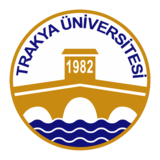History of Art
Hello everyone, I'm Yavuz Güner. I am a faculty member at Trakya University, Faculty of Letters, Department of History of Art. I would like to give you a brief idea about the teaching approach of our department and summarize what we are trying to do here. Undoubtedly, our most basic and primary goal is to ensure that our students have the flexibility to work in the unique conditions of the 21st century world, where the boundaries in theory and practice are blurred. I must say that the program we have put forward to achieve this goal has an interdisciplinary approach. As a social science field, we aim to train students who focus heavily on theoretical inquiry and critical thinking. Because it would not be wrong to say that the field of study of the discipline of art history is to analyze an intellectual production embodied in the unique work of art. With this aspect, the discipline of art history needs a strong theoretical background. In addition, we offer our students a hands-on education experience that strengthens their practical habits. Therefore, I can say that the main feature of our department's approach is to produce an intellectual flexibility reinforced with practical applications. Trakya University’s Art History Department consists of 3 main disciplines. These are the Turkish-Islamic, the Byzantine Arts, and the Western Art and Contemporary Arts. All three branches of science are covered through 4 years with a chronological understanding within their field of study. On the other hand, courses related to the interacting periods, such as late Byzantine and early Ottoman art, are included in the program simultaneously. The course contents are fashioned for the analyses of the cultural environment in which the plastic art of the mentioned periods, such as architecture, ornamentation, painting and sculpture, are covered. In addition, many elective courses in our curriculum offer the opportunity to provide specialization according to the wishes of our students. Faculty members of our department carry out excavations and surveys in important areas of medieval archeology. Ephesus Ayasuluk excavations and Edirne Yenisaray excavations can be given as examples. Our students can participate in these activities during the summer. In addition to these, they can increase their knowledge and skills with the activities that support the theoretical education program and with the domestic or international trips organized by the Art History Society, which operates within our university. Students who successfully complete the program receive a bachelor's degree from the Faculty of Letters of Trakya University and the title of art historian. After graduation, our students can participate in academic life as well as take part in the central and provincial directorates of the Ministry of Culture and Tourism, the General Directorate of Foundations and regional directorates. They can also work in art centers and art galleries, auctions, visual and print media, and national and international event organizations. Edirne, which is an important stop on the ancient Roman army road between Istanbul and Central Europe, is a place that draws attention with its cultural assets and rich history. In this sense, Edirne can be defined as a museum city. In other words, it is a complementary laboratory for art history education, which requires a strong theoretical background. This historical base and hundreds of years of urban culture, which also underpins Trakya University's mission of being a regional university, seems to be the most important contribution it will offer to Trakya University students. If you want to have the opportunity to deepen the history of culture, we invite you to Trakya University and Edirne.
show more


